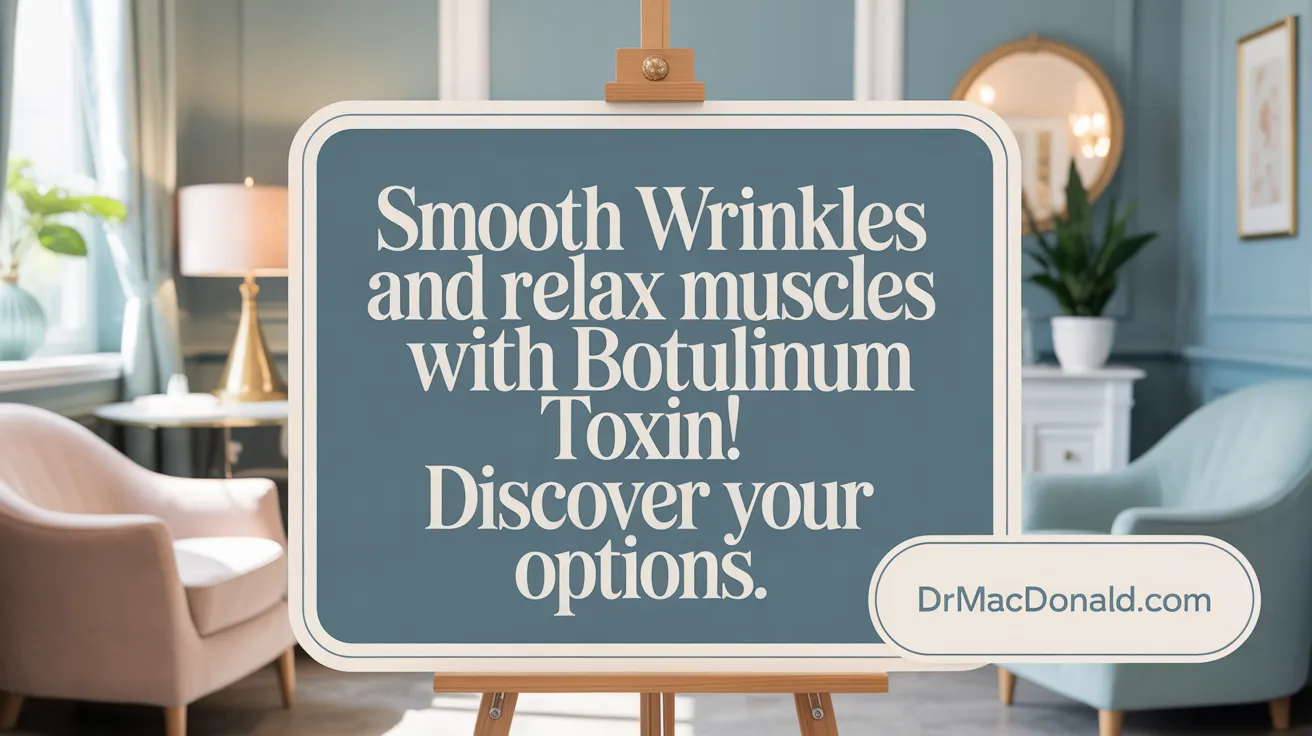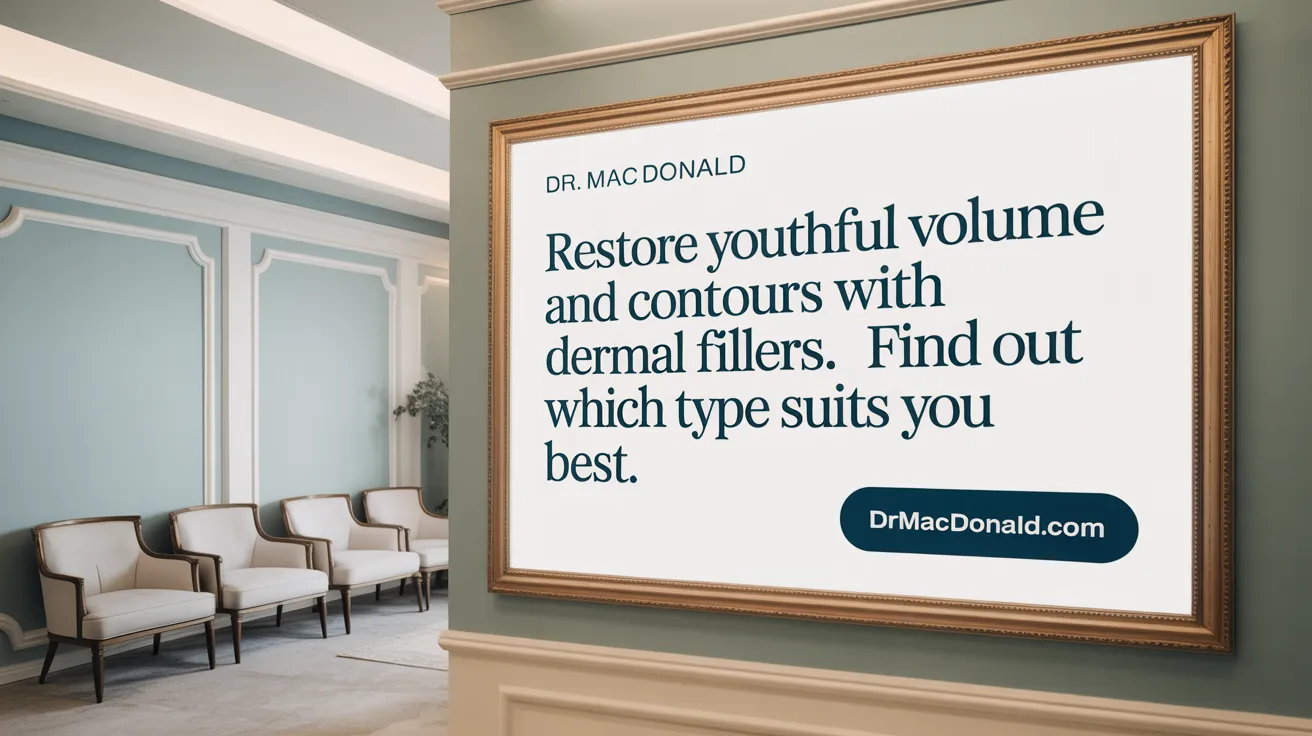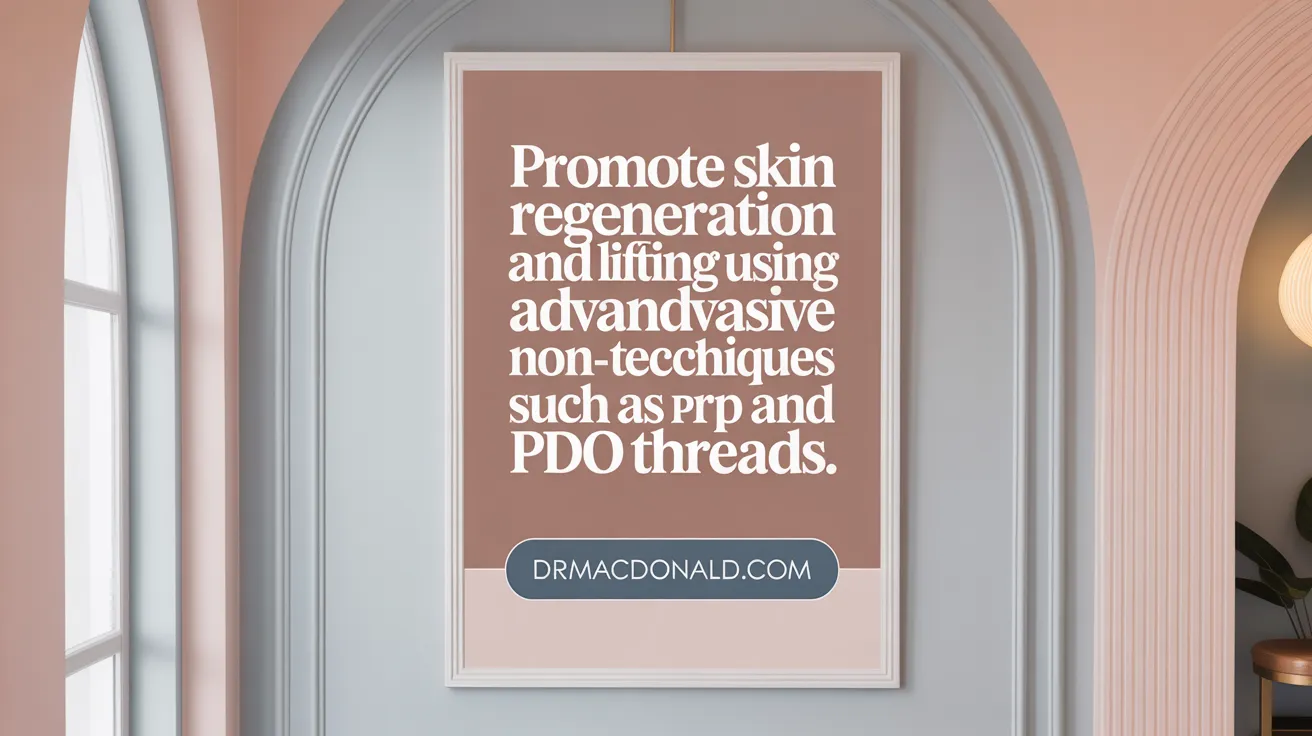Why Injectables Have Transformed Beauty and Medical Treatments
Injectable treatments have revolutionized the field of aesthetic medicine by offering minimally invasive options for wrinkle reduction, volume restoration, and medical condition management. Among these, botulinum toxin-based products such as Botox and Dysport have become household names, while dermal fillers and newer injectable technologies continue to expand possibilities. This article breaks down the most prominent types of injectables, explaining how they work, their uses, and what makes each unique.
Key Facts on Botulinum Toxin and Injectables
- Botulinum toxin injectables temporarily relax muscles by blocking nerve signals to reduce dynamic wrinkles.
- Botox was the first FDA-approved product (2002), with effects lasting 3-6 months, while Daxxify lasts up to 6 months.
- Dysport spreads more widely due to smaller protein size and works faster, within 2-3 days.
- FDA-approved indications include migraines, muscle spasticity, hyperhidrosis, overactive bladder, and more.
- Most effects of botulinum toxins begin within 1-7 days, lasting typically 3-4 months, longer with Daxxify.
- Common side effects are pain, bruising, headache, eyelid drooping, with serious complications due to toxin spread.
- Choice of toxin depends on individual anatomy, treatment goals, onset speed, duration, and medical history.
- Dermal fillers use substances like Hyaluronic Acid, CaHA, Poly-L-Lactic Acid, PMMA, and autologous fat to restore volume.
- Filler effects vary from 6 months to several years, with some like PMMA permanent and others like Sculptra gradual with long-lasting results.
- Specialized injectables like Kybella destroy fat cells, PRP promotes tissue rejuvenation, and PDO threads stimulate collagen for lifting.
1. Botulinum Toxin Injectables: Smooth Wrinkles and More

What are botulinum toxin injectables and how do they work?
Botulinum toxin type A injectables are widely used treatments that temporarily relax muscles by blocking nerve signals that cause muscle contractions. This muscle relaxation softens dynamic facial wrinkles—those that appear when you make facial expressions such as frowning or squinting.
Differences among Botox, Dysport, Jeuveau, Xeomin, and Daxxify
- Botox: The first FDA-approved botulinum toxin for cosmetic use (since 2002), it blocks acetylcholine release at neuromuscular junctions, relaxing muscles to reduce wrinkles. Results typically begin within 3 to 7 days and last about 3 to 6 months.
- Dysport: FDA-approved since 2009 for glabellar lines, Dysport tends to spread more once injected due to its smaller protein structure. It has a faster onset, often showing results within 2 to 3 days, making it effective for larger areas like the forehead.
- Jeuveau: Specifically developed for aesthetic purposes and FDA approved in 2019, it targets moderate to severe glabellar lines with efficacy similar to Botox. (Injectable wrinkle relaxers comparison)
- Xeomin: Approved in 2011, Xeomin is known as a “naked” botulinum toxin because it lacks accessory proteins, potentially reducing the chance of antibody formation. The onset and duration are comparable to Botox. (Botulinum toxin type A products overview)
- Daxxify: The newest option, approved in 2022, uses peptide technology to extend duration up to 4 to 6 months, the longest-lasting among botulinum toxin injectables. (Daxxify extended duration benefits
FDA-approved medical and cosmetic uses
Beyond smoothing dynamic wrinkles like frown lines, crow’s feet, and forehead creases, botulinum toxin injectables are approved for medical conditions including:
- Chronic migraines (Botox for migraines)
- Muscle spasticity (e.g., cerebral palsy, post-stroke stiffness)
- Excessive sweating (hyperhidrosis)
- Overactive bladder
- Cervical dystonia (neck spasms)
- Eye movement disorders such as strabismus and blepharospasm
(Medical uses of Botox and Dysport)
Duration and onset of effects
Most botulinum toxin injectables begin to show effects within 1 to 7 days, with Dysport generally working faster (2–3 days) than Botox (3–7 days). The effects tend to last around 3 to 4 months for most products, though Daxxify can extend results up to 6 months. (Onset and duration comparison of Botox and Dysport) (Duration of Botox effects
Safety and potential side effects
When administered by licensed and experienced healthcare providers, botulinum toxin injectables are safe with well-established safety profiles. Common mild side effects include:
- Pain, swelling, or bruising at injection sites
- Headache or flu-like symptoms
- Temporary drooping eyelids or uneven facial expressions
Rare but serious side effects can occur if the toxin spreads beyond the target muscle, possibly causing muscle weakness, vision problems, difficulty swallowing or breathing. Patients should promptly seek medical attention if serious symptoms occur. (Botox safety and side effects) (Side effects of Dysport)
Factors influencing injectable choice
Choosing the most suitable botulinum toxin product depends on individual anatomy, treatment goals, desired speed of onset, duration preference, and medical history. For example:
- Dysport may be preferred for faster results and larger treatment areas.
- Xeomin may be chosen for patients concerned about protein sensitivity.
- Daxxify offers longer-lasting effects to reduce injection frequency.
A thorough consultation with a certified expert injector ensures personalized treatment planning and optimal outcomes.
2. Dermal Fillers: Restoring Volume and Enhancing Contours

What are dermal fillers and how do they work?
Dermal fillers are gel-like injectable dermal fillers substances that are placed beneath the skin to address common signs of aging and volume loss. They restore facial volume, smooth out lines and wrinkles, enhance facial contours, and improve symmetry. By filling in depressed areas and adding plumpness, fillers create a rejuvenated, youthful appearance without surgery.
What types of fillers are available and how long do their effects last?
Several types of dermal fillers cater to different needs and areas of the face, each with distinct properties and durations:
-
Hyaluronic Acid (HA) Fillers: Brands like Juvederm and Restylane use HA, a natural substance in the skin that attracts and holds moisture. These fillers provide immediate results lasting typically 6 to 18 months. They are popular for lip enhancement, smoothing fine lines, and adding cheek volume.
-
Calcium Hydroxylapatite (CaHA): Found in products like Radiesse, CaHA fillers are thicker, denser, and last about 12 months. They not only add volume but also stimulate the body's collagen production, improving skin texture and firmness.
-
Poly-L-Lactic Acid: Used in Sculptra, this synthetic filler stimulates collagen synthesis gradually over multiple sessions. Results emerge over a few months and can last more than 2 years, making it ideal for longer-term volume restoration.
-
Polymethylmethacrylate (PMMA): Bellafill contains PMMA microspheres that remain permanently under the skin for ongoing support, combined with collagen. It’s used for medium to deep wrinkles and scars, with effects lasting up to five years.
-
Autologous Fat Injections: This technique harvests fat from the patient’s own body via liposuction and reinjects it to restore volume. Results can last many years but require surgical skill and careful handling to ensure fat survival.
Uses of dermal fillers for volume restoration and wrinkle smoothing
Dermal fillers are versatile tools for facial rejuvenation. They smooth lines around the nose and mouth (nasolabial folds), plump lips, restore sunken cheeks or temples, soften vertical lip lines, smooth chin creases, and improve facial symmetry. The choice of filler depends on the targeted area and the desired effect.
Procedure overview and immediate results
Treatment is typically performed in a brief office visit where the skin is cleansed and sometimes numbed with a topical anesthetic. Using fine needles or cannulas, the filler is injected strategically beneath the skin. Most patients notice immediate improvement, although mild swelling or bruising may occur temporarily.
Why choosing a qualified injector is important for dermal fillers
Proper administration demands in-depth knowledge of facial anatomy and injection techniques. Qualified providers, ideally board-certified cosmetic surgeons or dermatologists, ensure natural-looking outcomes and minimize risks such as bruising, swelling, or rare but serious complications like vascular occlusion in dermal filler complications. Comprehensive consultation and personalized treatment planning are key to safe, effective results.
| Filler Type | Example Brands | Duration | Key Features |
|---|---|---|---|
| Hyaluronic Acid (HA) | Juvederm, Restylane | 6 to 18 months | Immediate volume, hydration |
| Calcium Hydroxylapatite | Radiesse | About 12 months | Collagen stimulation, longer-lasting |
| Poly-L-Lactic Acid | Sculptra | Over 2 years | Gradual collagen buildup |
| Polymethylmethacrylate | Bellafill | Up to 5 years | Permanent, collagen support |
| Autologous Fat | Fat transfer | Many years | Long-lasting, requires surgery |
3. Specialized Injectables: Kybella, PRP, and PDO Threads

What is Kybella and how does it work?
Kybella is an FDA-approved injectable treatment specifically designed to reduce submental fat, commonly referred to as a "double chin." It contains deoxycholic acid, a substance that destroys fat cells beneath the chin. This treatment usually requires two to five sessions spaced apart to achieve optimal results. Once the fat cells are destroyed, the results are essentially permanent unless there is significant weight gain. Kybella offers a non-surgical solution for individuals looking to improve jawline definition and reduce fullness under the chin.
What is platelet-rich plasma (PRP) therapy?
PRP therapy involves using the patient's own blood plasma enriched with growth factors. This plasma is injected into targeted areas to stimulate tissue regeneration and rejuvenation. PRP can be applied for a variety of aesthetic goals, including improving skin texture and tone, promoting hair growth, and reducing the appearance of scars. Being an autologous treatment (using the patient’s own biological material), PRP is well-tolerated and considered a natural way to revitalize skin and hair.
How do PDO threads provide aesthetic benefits?
PDO (polydioxanone) thread collagen stimulation involves dissolvable sutures inserted beneath the skin to address sagging. These threads stimulate the body’s collagen production, which helps to firm and lift the skin subtly. The lifting effect improves facial contours and reduces mild skin laxity without surgery. Results from PDO thread treatments generally last between 6 to 9 months, providing a minimally invasive alternative for skin tightening and rejuvenation.
Treatment Goals and Expected Durations
- Kybella: Targets and permanently reduces fat beneath the chin; requires multiple treatments; lasting effects dependent on weight maintenance.
- PRP Therapy: Enhances skin and hair quality by promoting healing and collagen growth; repeated sessions may be necessary; effects develop gradually over months.
- PDO Threads: Offers skin lifting and contouring by boosting collagen; effects last 6 to 9 months; suitable for mild to moderate sagging.
How These Injectables Fit Within the Broader Spectrum
These specialized injectables complement more established treatments like botulinum toxin neurotoxins and dermal fillers. While neurotoxins relax muscles to reduce wrinkles and fillers restore volume, Kybella, PRP, and PDO threads focus on fat reduction, tissue regeneration, and lifting respectively. Together, they provide an expanded toolbox allowing personalized approaches for facial rejuvenation, tailored to individual needs and cosmetic goals.
Choosing the Right Injectable for You
With a wide variety of injectable treatments available—from neuromodulators like Botox and Dysport that relax muscles, to diverse dermal fillers restoring youthful volume, and specialized therapies like Kybella and PRP—each offers unique benefits and durations suited to different aesthetic and medical goals. Success and safety hinge on selecting a qualified, experienced provider who can tailor treatments to individual anatomy and needs. Understanding these options empowers you to make informed decisions in your journey toward rejuvenation and wellness.
